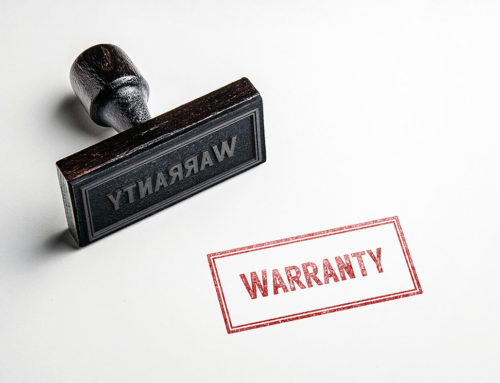ALLTEC Protection Pyramid Surveys — A Three Part Series
If you missed Part I, you can read it here: Part I — Grounding/Earthing, & Bonding.
Grounding/Earthing and Bonding alone are not sufficient to adequately protect a facility. The second tier of the Protection Pyramid diminishes the significance of random high-energy, short-duration electrical power transients through properly installed surge protective devices.
These occurrences are typically caused by atmospheric phenomena (such as lightning strikes), utility switching, inductive loads, and internally generated overvoltages. Transient voltage surge suppression (TVSS) or surge protection devices (SPD) should be incorporated and fully integrated into the facility’s inspection and maintenance program.
Protect critical facilities, equipment, records, and assets
Provide a safe working environment for personnel
Reduce the risk of downtime and lost revenue
Minimize liability and maintain a competitive posture
Build a disaster resilient enterprise

Studies have verified that approximately 80% of transient activity at a given facility is internally generated. For example, when a vacuum cleaner or heavy duty motor is powered on or off it creates an inductive load, which is a low magnitude surge impulse that propagates back through the electrical system. While internally generated transient activity can weaken equipment over time, the threat posed by lightning activity is particularly disconcerting due to its capability of delivering vast amounts of energy into unsuspecting electronic equipment loads.
As with any survey, the best way to start is with a site evaluation:
Collect information on damages experienced or anticipated by the facility
Create a prioritized outline of survey requirements
Study existing site plans, electrical panel layouts, and one-line electrical and riser diagrams
Determine critical load paths and physical panel and equipment locations
What is a transient?
Electrical transients are momentary bursts of energy induced upon power, data, or communication lines. They are characterized by extremely high voltages that drive tremendous amounts of current into an electrical circuit for a few millionths, up to a few thousandths, of a second. Large transients on the power system originating outside of a facility are best initially diverted at the service entrance of a facility. Transients generated within the premises are best diverted by SPDs located close to the internal source of the transients or close to the electronic load equipment if this is not possible. Best results are obtained if both locations are protected.
Standards for the “Installation Requirements for Lightning Protection,” NFPA 780, Section 4.20, and UL 96A, Section 13 detail the requirements for surge protection associated with lightning protection systems. IEEE 1100 – 8.6 states: Surge activity is often assumed to be an outside engendered anomaly. Lightning-induced electrical energy bursts, for example, typically come to mind as the primary source of surge activity. However, while lightning induced surges represent the most formidable transient related equipment menace, most surges originate from internal sources within a facility.
After developing an understanding of the facility and its needs, a site-specific inspection plan is created. Typical actions include:
Note critical loads on the electrical distribution system
Review upstream to note location and specification of each distribution node
- Note specifications and location of any surge protection device installed
- List compliance of transient surge protection system with IEEE std. C62.72 and IEEE std. 1100
Categorize each distribution node as per IEEE Std. C62.41 and select the appropriate category of surge protection devices
In order to determine the proper surge protection devices to be installed, the following information should be obtained, for reference during and after the survey:
Electrical one-line diagram/riser diagram
- AC power panel/critical load schedule
Voltage configuration, i.e., Delta, Wye, Wire color system
Data/Telecom distribution details, if required
Frequency range
Connector type/gender type
Depending upon the complexity of the power distribution system, as well as the facility grounding system, it is quite often very efficient and effective to inspect and test both at the same time. Start at the main utility power entrance, the main distribution panel and follow the critical load paths. A typical example of a simple system and the proper location of surge protection devices is shown in the riser diagram below.
Drawing mark-ups, notes and photographs taken during the inspection are valuable in creating an inspection and recommendations report. During the inspection, field notes should be gathered and organized, recording:
- Spare breakers for any required SPDs
- Voltage configuration for each panel in the critical load path
- Wire distances between panels, as well as between panels and equipment
- Available space for proper installation of recommended SPD
- Confirm that the breaker/disconnect is in the ON position and that Surge Protection Devices appear to be untampered
- Confirm that UL 1449 SPDs have 3rd Edition labeling
- If observable, ensure that SPD units are properly connected and that all connections are secure. All wire paths should be as short and direct as possible
- Surge devices are operational/undamaged (all phase indicator lights are functioning)
- If SPD unit appears non-operational (one or more phase indicator lights are OFF), make note of downstream critical equipment for evaluation of possible damage
On-Site Survey & Testing, Data Analysis and Computer Modeling should yield a Survey Report and supporting documentation containing observations, testing and data analysis, and site photographs as needed. Reports should include
Survey Report
Testing results
Listing of grounding & bonding compliance
If needed, report on required upgrades to cover noncompliance
One of the most important investments a company makes is in sensitive electronic equipment. As this equipment becomes more sophisticated and electrically susceptible, the need for a properly sized and coordinated surge protection becomes more crucial. Examples, such as cellular, radio and television broadcasting sites, computer facilities, power substations, communication centers, medical facilities and industrial plants all share the common need for the design, implementation and inspection/maintenance of high quality surge protection systems.
If you have an existing or planned facility, be sure to give ALLTEC a call or email.
If you have an existing or planned facility, be sure to give ALLTEC a call or email. We can make sure your operation is the safest possible facility, backed by our team of dedicated risk-mitigation experts. If you have a current or future project that needs grounding/bonding solutions, surge suppression or lightning protection please contact ALLTEC at either 1-828-646-9290 or online-info@alltecglobal.com









